Veronika Ryndina
Interviewer: Anna Gvozdeva (curator)
Year of birth: 1997
Where do you live: Rehoboth Beach, DE
Your education: NCSPU (Naberezhnye Chelny State Pedagogical University, Faculty of Art and Design), Bachelor’s degree in Environmental Design
Describe your art in three words: nature · adventure · love
Your discipline: painting, mixed media, digital art
Website
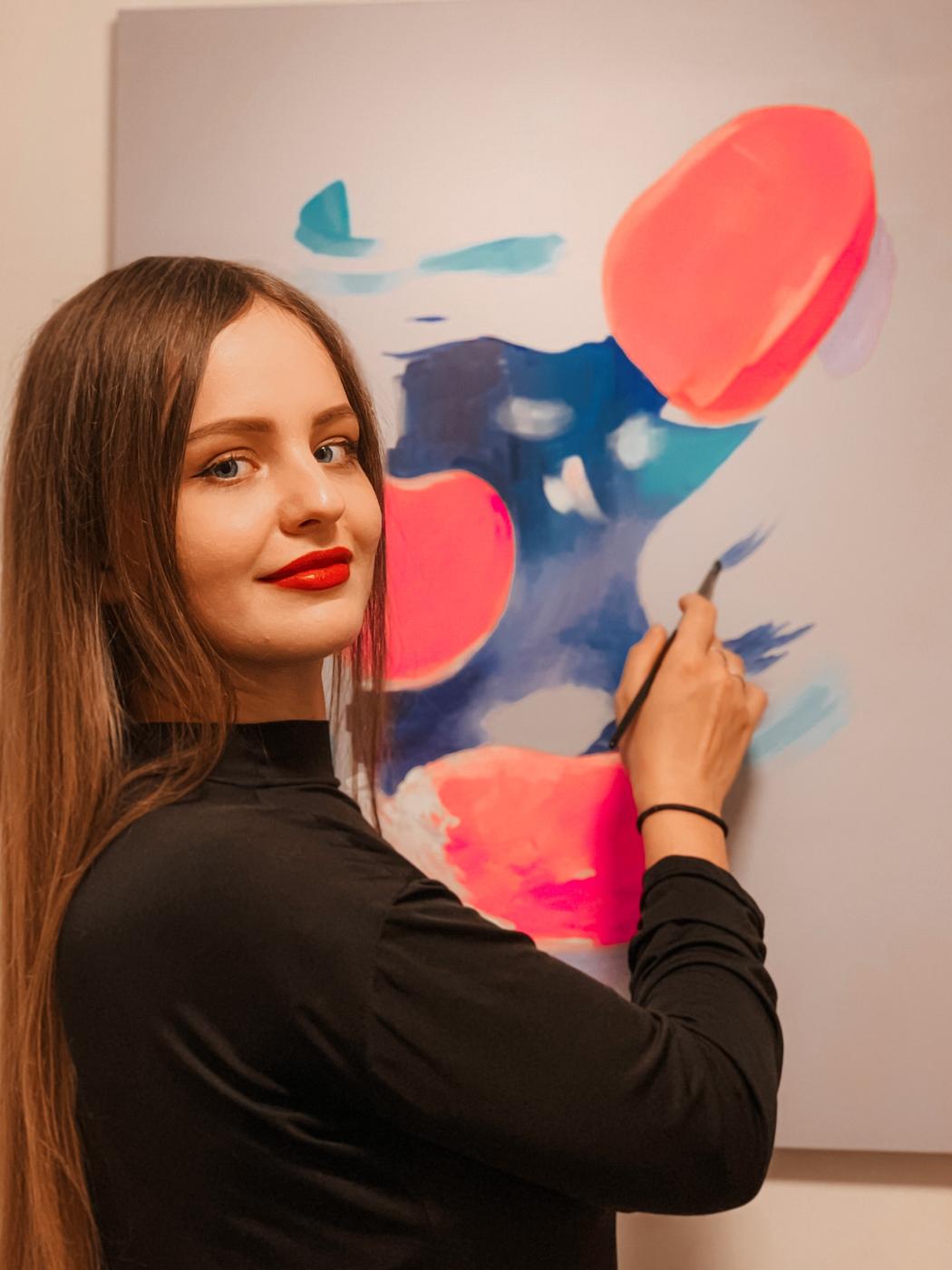
You work across multiple media — watercolor, acrylic, digital, and mixed techniques. What attracts you to each, and how do you decide which medium to use for a new piece?
Usually, I have a clear vision in my mind of how the final piece will look, and that vision naturally includes the medium I’ll use. It’s as simple as that. My biggest love is watercolor. I’m fascinated by the process itself: watching the pigments blend and granulate, seeing how particles move across the paper. It’s mesmerizing and deeply meditative. I even make my own shiny watercolor paints and love observing how the tiny sparkles flow on the surface.
I usually choose acrylic over watercolor when I want to create impasto textures or simply prefer working on canvas instead of paper. Mixed techniques appear mostly in my sketchbooks – that’s my experimental space. I used to work digitally a lot, but with all the new AI tools, I now feel a stronger desire to return to real brushes and paints, to experience the process with all my senses rather than through a screen. These days, I use digital tools mostly for sketches or color studies – it’s a great way to explore ideas without wasting paint.
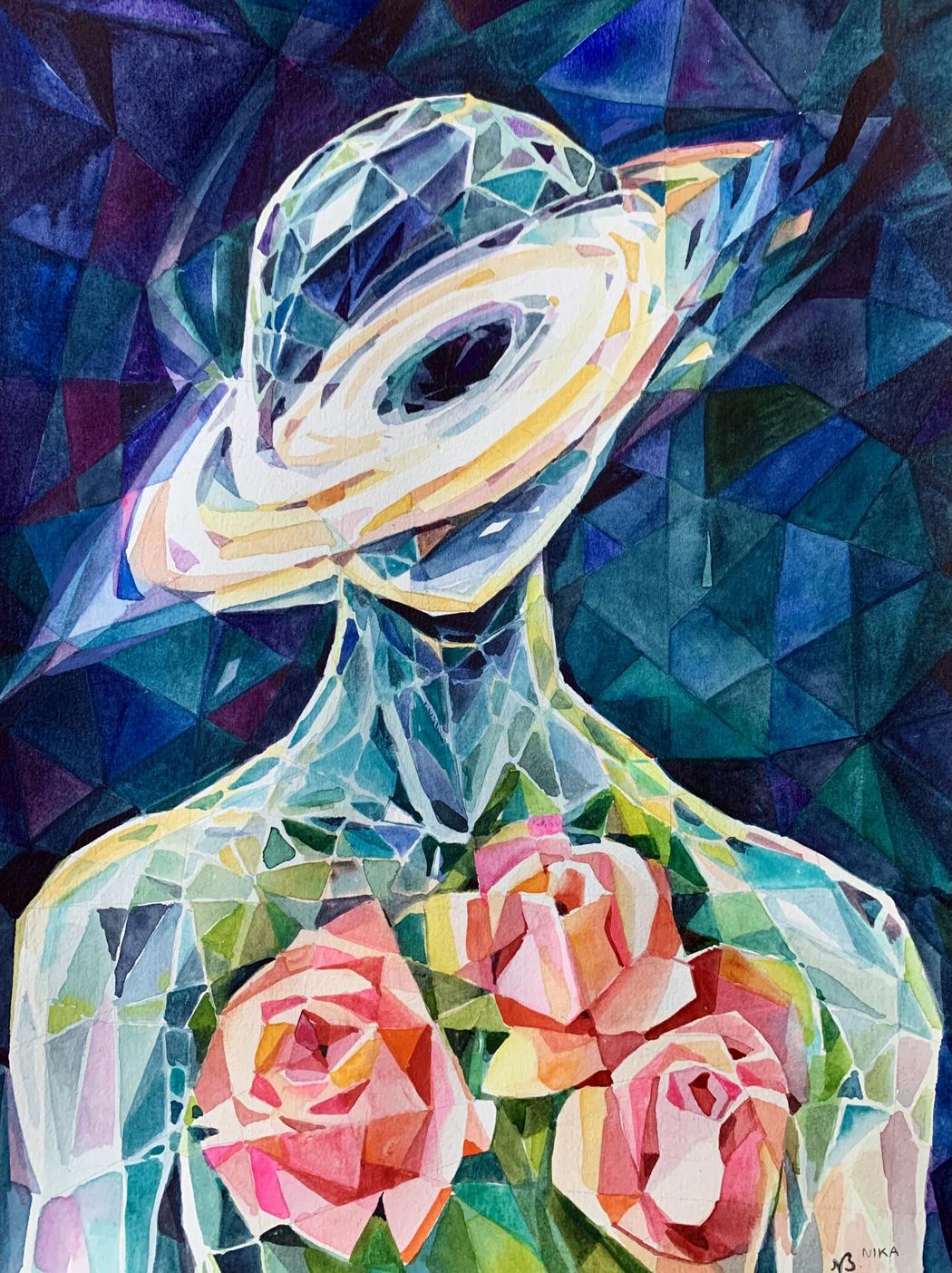 Veronika Ryndina | Inner Gravity
Veronika Ryndina | Inner Gravity
Your portfolio moves fluidly between botanical realism, expressive landscapes, and abstraction. What connects these directions for you on an emotional or conceptual level?
I’ve always been deeply connected to nature – it has been my energy source since childhood. That’s where my botanical realism and expressive landscapes come from. But simply capturing nature as the human eye or a camera sees it feels boring to me; I always want to add something expressive or unexpected. Even in my realistic botanical pieces, I tend to include small imaginative details that wouldn’t exist in real life.
My connection to abstraction comes from my background in environmental design, where you learn to think in shapes and volumes. During my studies, we often had creative exercises based on abstract compositions, and that shaped the way I perceive form. Abstraction allows me to express deeper philosophical ideas and maintain a sense of dynamic movement that realism sometimes limits. Over time, I started mixing these directions; working in different styles helps me stay balanced. When I get tired of realism, I switch to abstraction, and vice versa. It keeps my mind fresh.
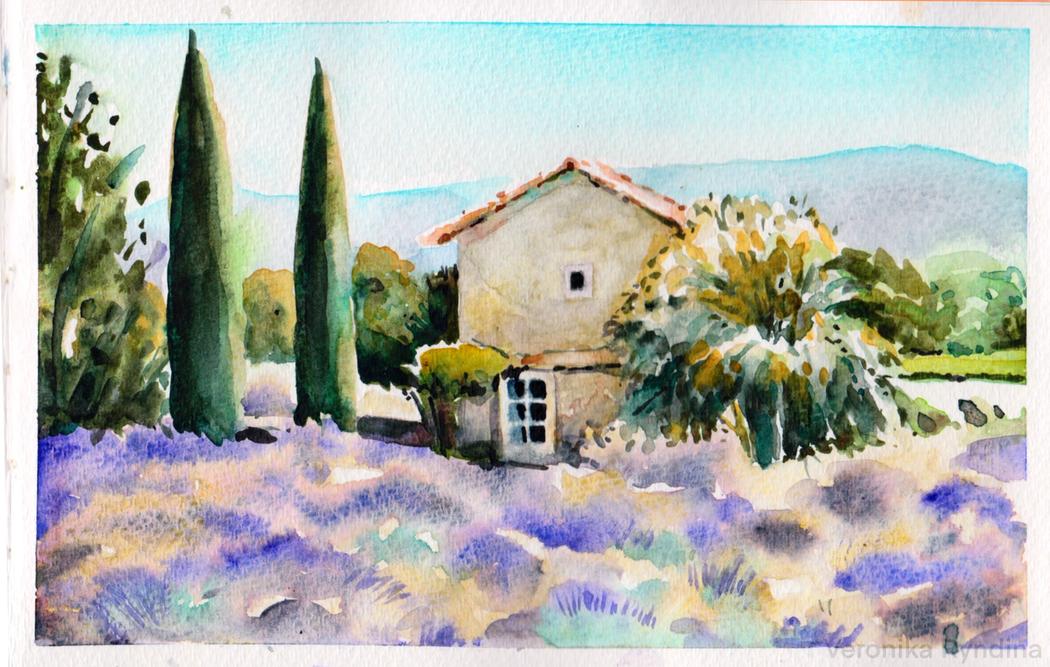 Veronika Ryndina | Italian Fields
Veronika Ryndina | Italian Fields
How does your background in architectural environment design influence the structure and composition of your artworks?
My academic training taught me that every artwork should have a concept, and every stroke should have a reason. Before I start a piece, I ask myself many questions: what is the best composition, what color scheme will serve the message, what emotions do I want to evoke, and what’s the underlying idea behind the image? I always think about both the direct and the hidden messages within the artwork.
This mindset came from design where every decision must be functional and meaningful. Abstract art, especially, requires even more intention. It might seem spontaneous or effortless to the viewer, but there’s always a complex thought process behind it.
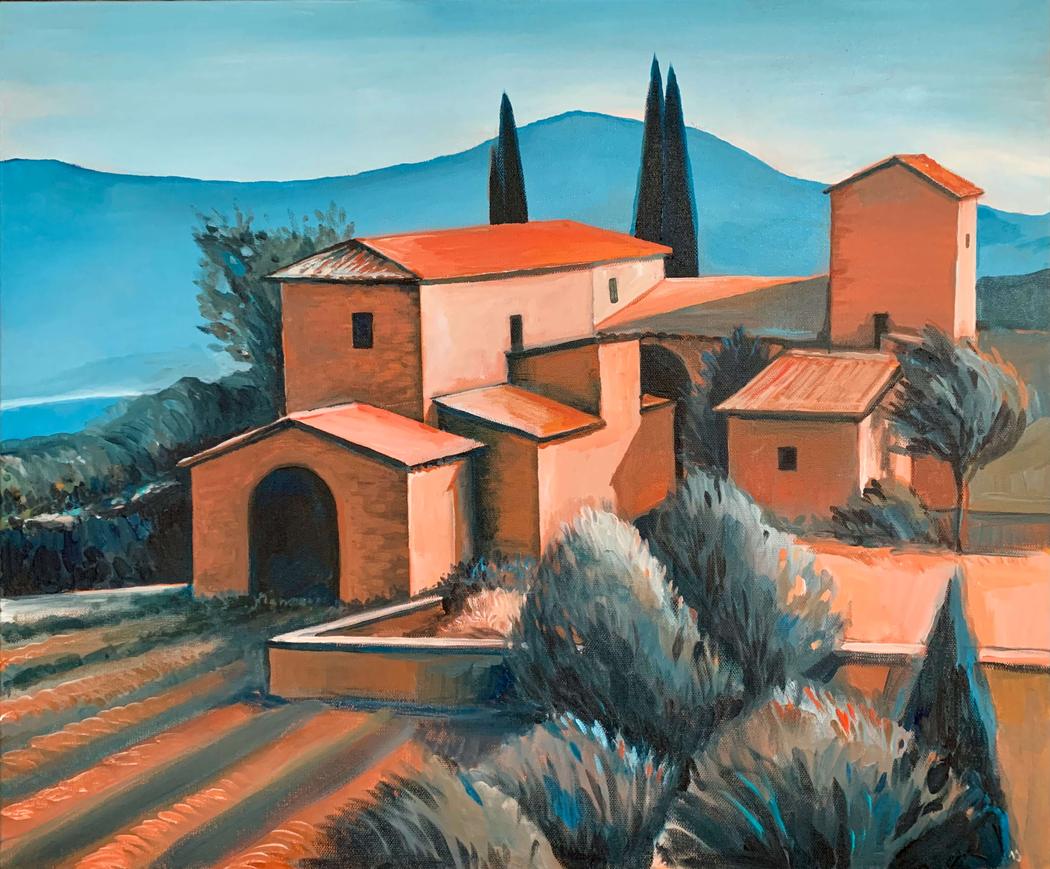 Veronika Ryndina | Terracotta Memory
Veronika Ryndina | Terracotta Memory
Could you describe your creative process — from the initial idea to the finished piece?
I usually begin with a very clear mental image of the finished work. I think in detailed visuals, so once I can “see” the piece, I reverse-engineer how to achieve it. I decide which methods or tools will best serve the vision – for example, whether I’ll need an airbrush for smooth gradients or fine brushes for detail.
I start with black-and-white sketches to explore composition and tonal balance, often making several versions. Then I move to color studies, beginning with the vivid hues I first imagined and gradually testing more limited palettes. After setting the sketches aside for a day or two, I come back to them with fresh eyes and choose the version that feels most balanced. Then I create a detailed final sketch before starting the actual painting.
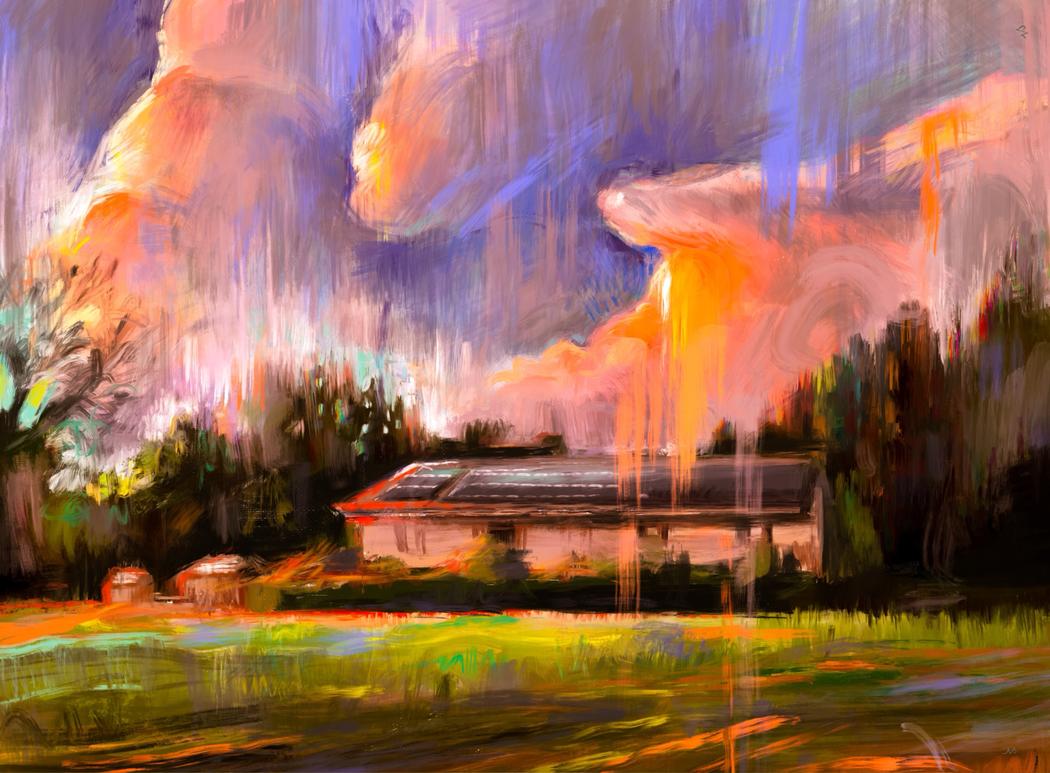 Veronika Ryndina | When Sky Fell Open
Veronika Ryndina | When Sky Fell Open
Nature plays a strong role in your work. Do you paint from observation, memory, or imagination?
It’s usually a combination of all three when I work realistically. I like adding something personal and imaginative to each piece. Even in abstraction, I rely on my academic foundation; so memory and imagination are always part of the process. They merge naturally.
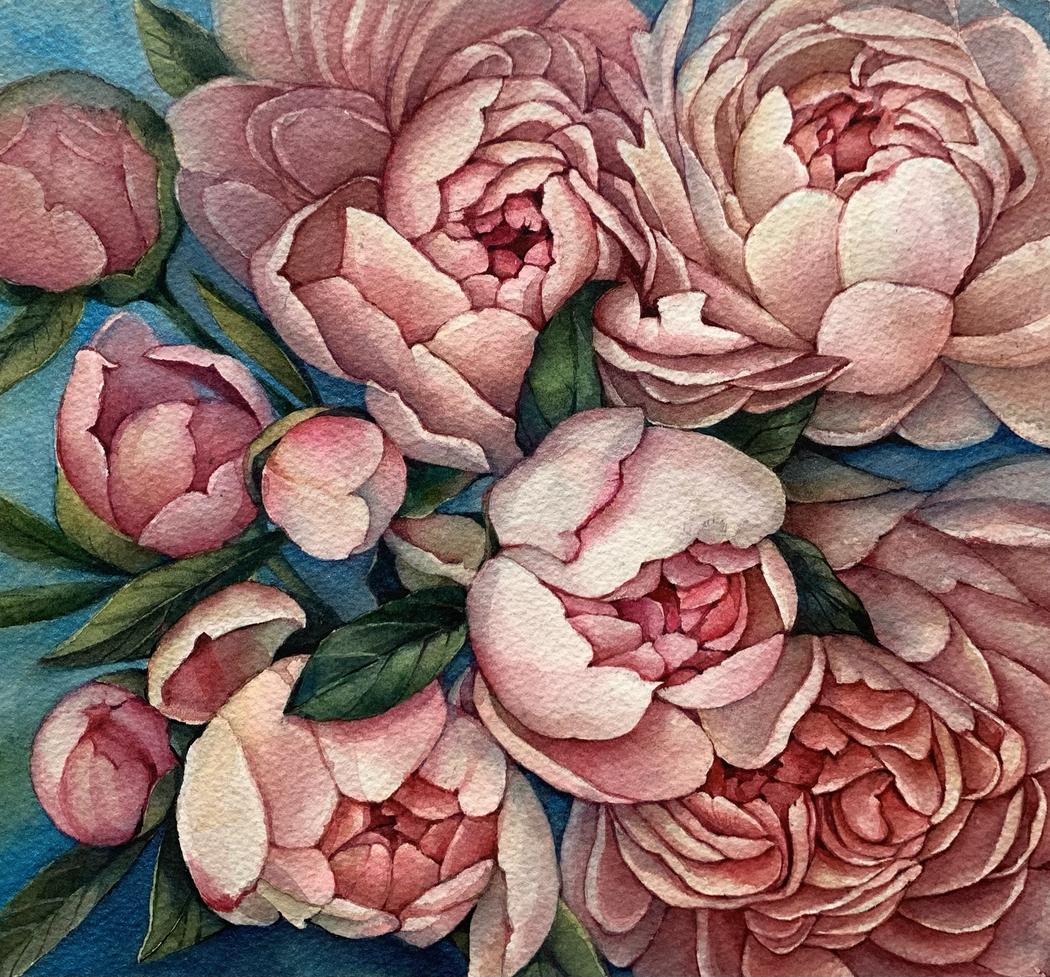 Veronika Ryndina | Whispers In Bloom
Veronika Ryndina | Whispers In Bloom
How do you approach color — is it intuitive, symbolic, or analytical for you?
It depends on the purpose of the work. If I’m creating a painting for a specific interior, I start analytically: I study the space, its atmosphere, and how the artwork will interact with it. I think about how color can complement the environment and the emotions of the people who live with the piece. That’s my designer mindset.
But when I paint for myself, color becomes purely intuitive. Sometimes you just feel an urge to paint, and overthinking color can interrupt that flow. I can always analyze it later and adjust future works. Art isn’t always about symbolism, sometimes we love colors simply because they make us feel alive.
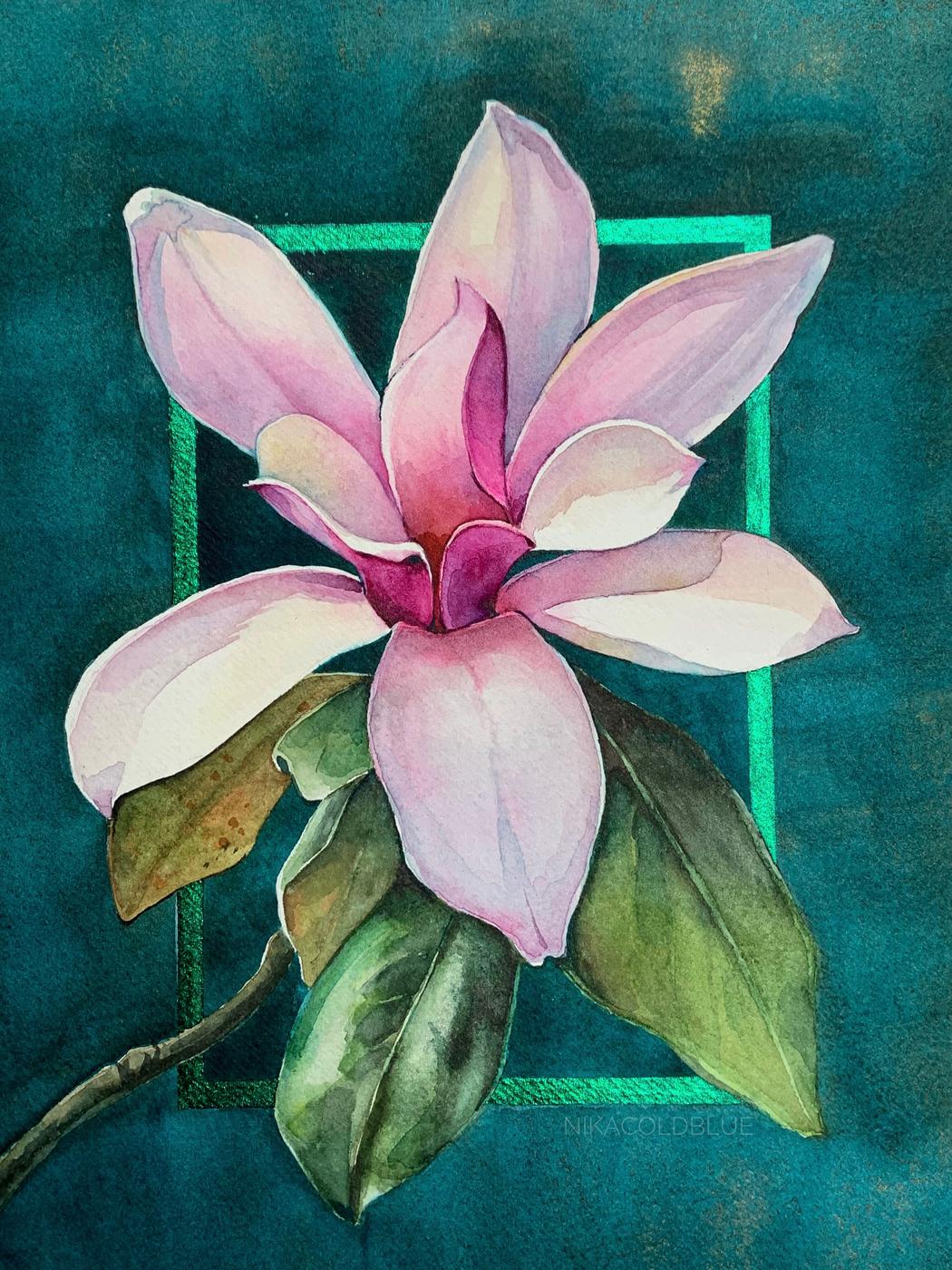 Veronika Ryndina | Wispers In Magnolia
Veronika Ryndina | Wispers In Magnolia
What do you seek to evoke in the viewer through your paintings?
I want people to feel joy, calm, and inspiration. There’s already too much sadness and negativity in the world – I’ve never wanted to add to that. That’s why I never paint when I’m in a bad mood; every piece carries an emotional imprint. When I look at my own paintings, I can still recall exactly what I felt while creating them. Even if a work looks perfect technically, if I painted it while feeling low, I’d probably paint over it later.
For me, each artwork is like an emotional artifact: it holds the energy of the moment it was created. I want that energy to be uplifting for anyone who sees it.

Leave a Reply